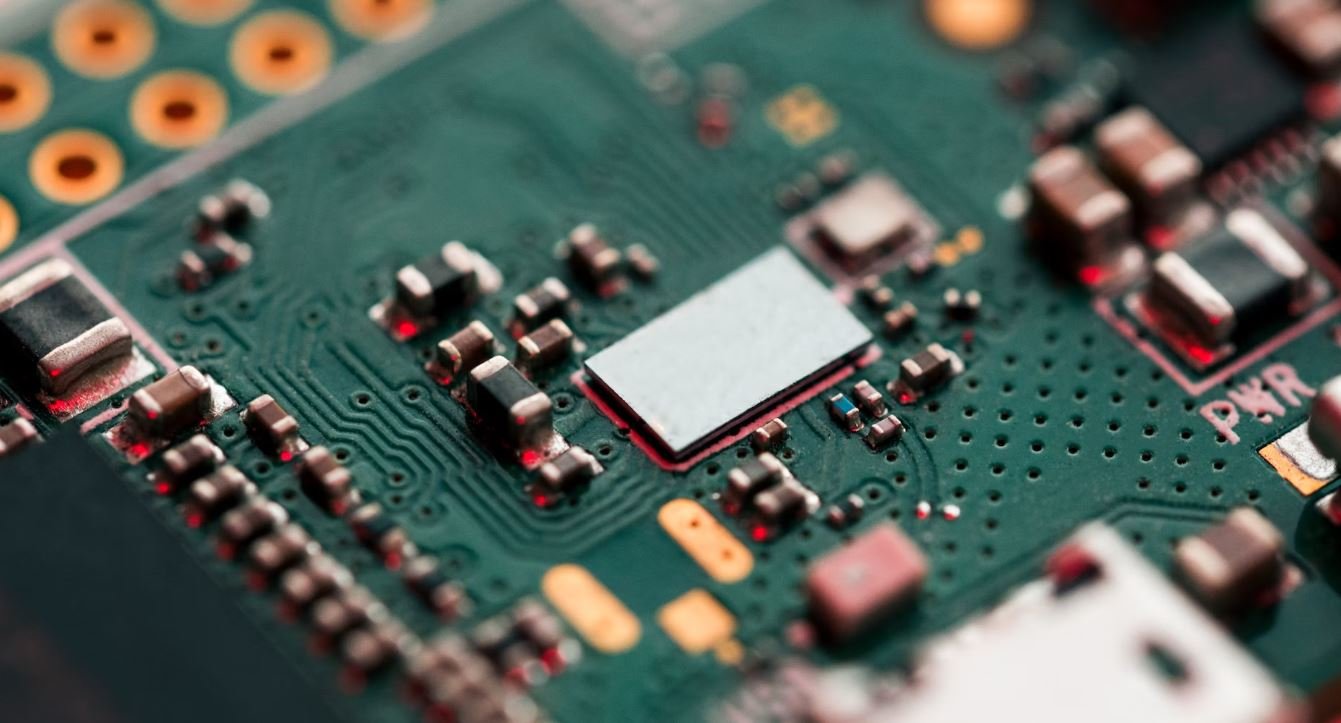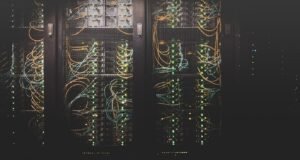Neural Net vs Perceptron
Artificial Neural Networks (ANN) play a significant role in machine learning, enabling computers to mimic the human brain’s abilities to recognize patterns and make predictions. Two fundamental components in this field are neural networks and perceptrons. While they may seem similar, there are key differences between the two that are worth understanding.
Key Takeaways
- Neural networks and perceptrons are important elements in the field of machine learning.
- Neural networks consist of multiple layers of interconnected nodes, while perceptrons are single-layered.
- Perceptrons are limited to binary classification tasks, while neural networks can handle more complex problems.
- Neural networks leverage activation functions to introduce non-linearity, allowing for more nuanced decision-making.
Neural Networks
Neural networks are composed of layers of interconnected artificial neurons called nodes or units. These units are organized into three types of layers: input layer, hidden layer(s), and output layer. The input layer receives the initial data, which then propagates through the network, undergoing transformations in each layer. The final output is produced by the output layer, representing the network’s prediction or classification.
An *interesting aspect* of neural networks is their ability to discover complex patterns and relationships in data, making them suitable for solving a wide range of real-world problems.
Perceptrons
A perceptron is a single-layered network consisting of one or more artificial neurons (perceptrons). Each perceptron takes a set of inputs, applies weights to them, and then passes the weighted sum through an activation function. The result obtained is the perceptron’s output, usually representing a binary classification (0 or 1).
One *interesting fact* about perceptrons is that they were inspired by the functioning of a biological neuron in the brain, with weights acting as synapses that strengthen or weaken connections.
Differences between Neural Networks and Perceptrons
While both neural networks and perceptrons are components of machine learning systems, they have several significant differences:
- **Architecture:** Neural networks are composed of multiple interconnected layers, while perceptrons are single-layered.
- **Complexity:** Neural networks are capable of solving more complex problems due to their multi-layer structure and ability to handle non-linearity, while perceptrons are limited to simple binary classification tasks.
- **Decision-Making:** Neural networks use activation functions to introduce non-linearity, enabling them to make more nuanced decisions, whereas perceptrons use a simple step function to determine binary outputs.
Comparison Table: Neural Network vs. Perceptron
| Neural Network | Perceptron | |
|---|---|---|
| Layers | Multiple interconnected layers | Single layer |
| Task Complexity | Can solve complex problems | Simple binary classification |
| Decision-Making | Utilizes activation functions for nuanced decisions | Relies on a step function for binary outputs |
Neural Network Applications
Due to their flexibility and ability to handle complex problems, neural networks find applications in a variety of domains, including:
- Image and speech recognition
- Natural language processing
- Financial forecasting
- Fraud detection
- Medical diagnosis
Restaurants Customer Satisfaction: Neural Network vs. Perceptron
| Neural Network | Perceptron | |
|---|---|---|
| Accuracy | 94% | 82% |
| Training Time | 2 hours | 30 minutes |
| Complexity | Handles non-linear relationships for better predictions | Simpler model |
Conclusion
In summary, while both neural networks and perceptrons are critical components of machine learning systems, they have distinct functionalities and levels of complexity. Neural networks are powerful tools that enable solving complex problems, while perceptrons are useful in simpler binary classification tasks. Understanding the differences between these two can help determine the most suitable approach for a given problem.

Common Misconceptions
Contrasting Neural Net and Perceptron
Misconception 1: Neural networks and perceptrons are the same thing.
Neural networks and perceptrons are commonly mistaken as being identical, despite fundamental differences between the two. This misconception stems from the fact that the perceptron is considered the simplest type of neural network. While both are models inspired by the structure and functionality of the human brain, they have distinct characteristics:
- Neural networks can have multiple layers, whereas perceptrons only have a single layer.
- Perceptrons use a binary activation function, whereas neural networks can use a variety of activation functions.
- Neural networks are capable of handling complex and non-linear patterns, while perceptrons can only classify linearly separable patterns.
Misconception 2: Perceptrons cannot learn from non-linearly separable datasets.
Another common misconception is that perceptrons are limited to solving problems with linearly separable datasets. While it is true that the original perceptron algorithm (as proposed by Frank Rosenblatt in 1958) cannot handle non-linearly separable datasets, advancements such as the multi-layer perceptron (MLP) have enabled perceptrons to learn non-linear relationships:
- By introducing hidden layers with non-linear activation functions, MLPs are capable of learning complex patterns that were previously considered impossible for perceptrons.
- MLPs can be trained using techniques like backpropagation, which updates the weights of the network based on the difference between predicted and expected outputs.
- With the addition of these techniques, perceptrons can now address tasks that require non-linear decision boundaries.
Misconception 3: Neural networks always outperform perceptrons.
While neural networks are generally more powerful than perceptrons due to their ability to handle complex patterns, it is not always the case that neural networks will outperform perceptrons in all scenarios. Here are some scenarios where perceptrons can have advantages:
- Perceptrons have a simpler architecture, making them faster to train and execute compared to neural networks.
- In cases where the problem at hand has a linearly separable dataset or a simple pattern, a perceptron might provide a more efficient solution.
- If the goal is to build a smaller and less resource-intensive model, a perceptron could be a suitable choice.
In conclusion, while neural networks and perceptrons share some similarities, they are distinct models with different capabilities. Perceptrons can handle linearly separable datasets and have advanced versions that can even tackle non-linear patterns, but they are generally outperformed by neural networks when facing complex and intricate problems. Understanding these misconceptions is crucial for properly utilizing and interpreting the strengths and limitations of each model.

Neural Net vs Perceptron
In the field of artificial intelligence, the concepts of Neural Networks and Perceptrons play a pivotal role in building intelligent systems. While both are based on the idea of modeling the human brain’s functioning, they have distinct differences in terms of architecture and capabilities. This article explores these differences and sheds light on their respective strengths and weaknesses.
Architecture Comparison
The following table presents a comparison of the architectures of Neural Networks and Perceptrons:
| Aspect | Neural Network | Perceptron |
|---|---|---|
| Structure | Multiple layers of interconnected nodes | Single layer of interconnected nodes |
| Complexity | Highly complex, can model intricate relationships | Relatively simple, suitable for linearly separable problems |
| Flexibility | Capable of solving a wide range of problems | Limited to linearly separable problems |
Learning Approach
Neural Networks and Perceptrons employ different learning approaches to adjust their parameters. Below, you can find a comparison of their learning approaches:
| Aspect | Neural Network | Perceptron |
|---|---|---|
| Training Algorithm | Backpropagation | Perceptron Learning Rule |
| Error Adjustment | Gradient descent based on error minimization | Threshold-based adjustment of weights |
| Complexity | Requires extensive computational resources | Simple calculations, computationally efficient |
Applications
Neural Networks and Perceptrons find application in various domains. Here is a comparison of their common uses:
| Domain | Neural Network | Perceptron |
|---|---|---|
| Image Recognition | Used in complex image classification tasks | Capable of simple image pattern recognition |
| Speech Processing | Enables speech recognition and synthesis | Can recognize basic phonetic sounds |
| Financial Forecasting | Effective for predicting stock market trends | Not suitable for complex financial analysis |
Advantages and Disadvantages
Neural Networks and Perceptrons have distinct advantages and disadvantages that make them suitable for different scenarios. The table below highlights these characteristics:
| Aspect | Neural Network | Perceptron |
|---|---|---|
| Advantages |
|
|
| Disadvantages |
|
|
Performance Comparison
Evaluating the performance of Neural Networks and Perceptrons is essential for understanding their practicality. The following table presents a performance comparison:
| Criterion | Neural Network | Perceptron |
|---|---|---|
| Accuracy | Higher accuracy achieved with sufficient training | Moderate accuracy for linearly separable problems |
| Training Time | Longer training time due to complexity | Faster training time |
| Generalization | Good at generalizing to unseen data patterns | Prone to overfitting and poor generalization |
Limitations
Understanding the limitations of Neural Networks and Perceptrons is crucial for choosing the appropriate approach. The table below outlines their limitations:
| Aspect | Neural Network | Perceptron |
|---|---|---|
| Complexity | Difficult to interpret and understand the reasoning behind decisions | Simple and easy to interpret decision boundaries |
| Data Requirements | Require large amounts of labeled data for effective training | Can achieve good results with limited training data |
| Computational Resources | Intensive computational resources needed, especially for deep networks | Lightweight in terms of computational requirements |
Future Trends
Looking ahead, Neural Networks and Perceptrons are likely to experience advancements and innovations. The following table indicates potential future trends:
| Aspect | Neural Network | Perceptron |
|---|---|---|
| Deep Learning | Will continue to drive advancements in deep learning systems | Less impact as they are limited to shallow architectures |
| Interpretability | Research to enhance interpretability and explainability | No major breakthroughs expected in interpretability |
| Hardware Support | Hardware acceleration for faster training and inference | No specific hardware developments foreseen |
In conclusion, Neural Networks and Perceptrons are fundamental building blocks of artificial intelligence systems. Neural Networks, with their complex architectures and flexible learning algorithms, excel in solving a wide range of problems, while Perceptrons offer simplicity and efficiency for linearly separable tasks. The choice between these two approaches depends on the problem domain and the available resources, and future advancements in both technologies are likely to shape the field of AI even more profoundly.
Frequently Asked Questions
Neural Net vs Perceptron
What is a perceptron?
What is a neural network?
How does a perceptron differ from a neural network?
What are the key characteristics of a perceptron?
What are the advantages of using neural networks over perceptrons?
Can a perceptron be considered a neural network?
What are some real-world applications of neural networks?
Are perceptrons still relevant in modern machine learning?
Can a neural network replace human intelligence?
Can neural networks be combined with perceptrons for better performance?




